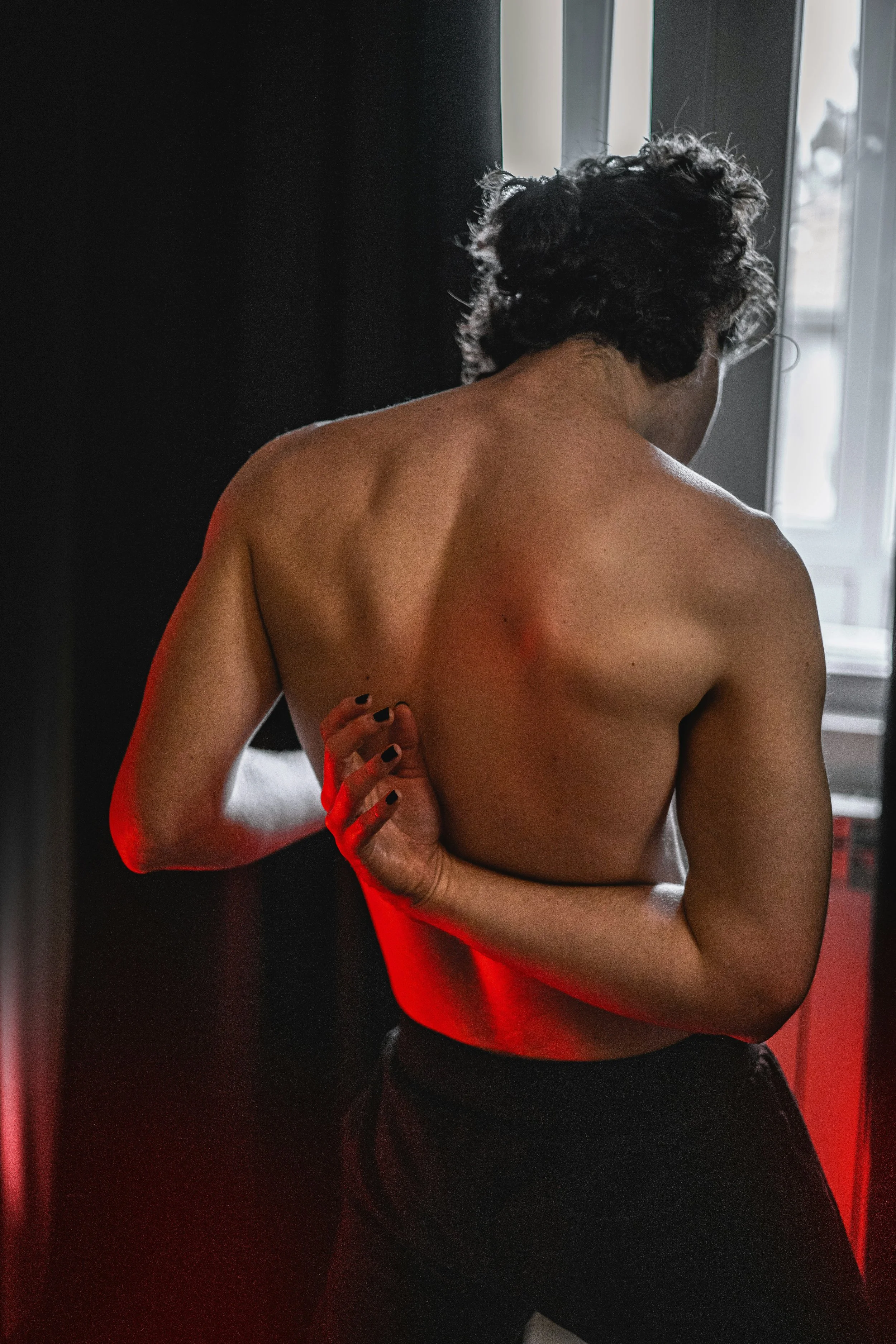
How to detect it early?
Scoliosis is often discovered during routine checkups, but you can also look for signs at home.
Early Signs You Shouldn’t Miss
-
Look in a mirror or take a photo with arms relaxed at your sides. Are the shoulders level? One higher than the other can be an early clue.
-
Stand with your back to a mirror (or ask someone to look). Are both shoulder blades even? If one sticks out more, it’s worth noting.
-
Face forward and look where your hips sit. Are they level? One side higher or tilted can signal a curve in the spine.
-
Check if the space between the arm and waist is the same on both sides. Uneven curves or one side looking “pinched in” could mean a spinal curve.
-
Stand up straight, feet together, then bend forward slowly with arms dangling. Look from behind — do you see one side of the back higher than the other? That’s called a rib hump.
-
Pay attention to whether they lean to one side, slouch more than usual, or look off-balance when standing still.
-
Check if clothes hang evenly — shirts or dresses might twist, or pant legs may seem different lengths even if they aren’t.
-
Mild, ongoing back pain or tiredness after sitting or standing can sometimes hint at an underlying spinal issue.
-
Stand straight and take a photo every few months (front, back, and side). Compare them — small changes over time can be easier to see in pictures.
-
If you notice anything unusual, schedule a check-up with a doctor or school nurse. Early professional screening can confirm if it’s scoliosis.
Types of Scoliosis
-
Idiopathic Scoliosis
- Makes up about 80–85% of cases
- Cause is unknown (“idiopathic” = unknown cause)
- Usually shows up in kids and teens during growth spurts
- Often found by school screenings, parents, or during checkups

-
Congenital Scoliosis
- Starts before birth because the spine’s bones didn’t form normally
- Found in babies or young kids
- Curves can be more complex and may need closer follow-up

-
Neuromuscular Scoliosis
- Caused by conditions like cerebral palsy, muscular dystrophy, or spinal cord injury
- Happens when muscles can’t keep the spine balanced
- Often more likely to get worse and needs careful monitoring

-
Degenerative Scoliosis
- Happens later in life due to arthritis, disc wear, or bone changes
- Usually affects adults, but good for parents to know
- Causes pain and stiffness more often than teen scoliosis

-
Functional Scoliosis
- Curve is temporary and caused by something outside the spine
- Example: one leg is shorter, muscle spasms, or poor posture
- When the cause is fixed, the curve often goes away

-
Syndromic Scoliosis
- Happens along with conditions like Marfan syndrome, Ehlers-Danlos, or Down syndrome
- Similar to congenital or neuromuscular scoliosis but tied to a known syndrome

Your Early Detection Checklist is Here
Quick, simple steps to identify warning signs before they progress.
